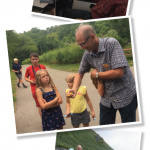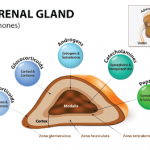Q. What is your vision for your presidency?
A. Realizing that federal funding for rheumatology research has diminished substantially over the past decade, that our workforce is aging and that our patient population is aging and growing, I want to put my emphasis over the next couple years on expanding the Foundation’s resources. In order to satisfy the needs that we have for funding research and workforce development, we need financial resources. So we must expand our efforts in fundraising. We need to reach out to our patients, our fellow physicians, our fellow rheumatologists and others who have interest in the success of rheumatology research.
Q. What about the Foundation excites you most?
A. The thing that excited me about being involved with the Foundation was realizing that the Foundation is the biggest private funding source of rheumatology research and training in the U.S. As I practice rheumatology and work in my institution, I realize the future of rheumatology depends on having well-trained rheumatology professionals. Our future ability to treat our patients and to conquer our diseases, which is really what we are after—the cure of our diseases—depends on having these advancements in science that the Foundation fosters.
Q. What is your hope for the Foundation over the next 30 years?
A. I wish for greater visibility of the Foundation. I want people to realize that the Foundation is a highly ranked organization that uses the vast majority of its resources for its mission-driven activities—workforce development and research. That realization is what’s behind the Charity Navigator four-star rating, the highest possible, that we have as a foundation.
Q. Why do you believe it’s important for ACR/ARHP members to support the Foundation?
A. The work of the Foundation is fundamental to the success of rheumatology as a discipline and fundamental to the best treatment of our patients. All of us in the ACR/ARHP have this No. 1 goal of making the lives of patients with rheumatic disease better, and the Foundation supports the training and research that make that happen. That’s the key reason why members should support the mission of the Foundation and the work of the Foundation.
We would like to eventually find the cure or cures for these difficult and really devastating diseases, and we want to be able to bring the science necessary for developing these cures to our patients. The Foundation’s work is critical to these goals. We are a long way from the cure for most of our diseases, but we are a lot closer than we were 30 years ago when the Foundation started its work.



